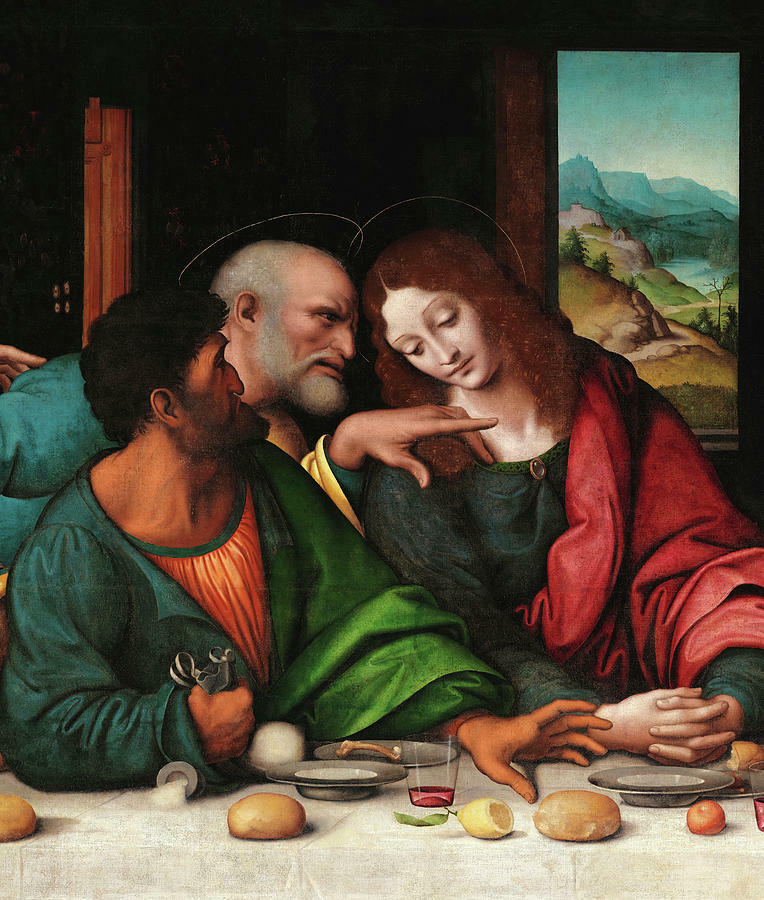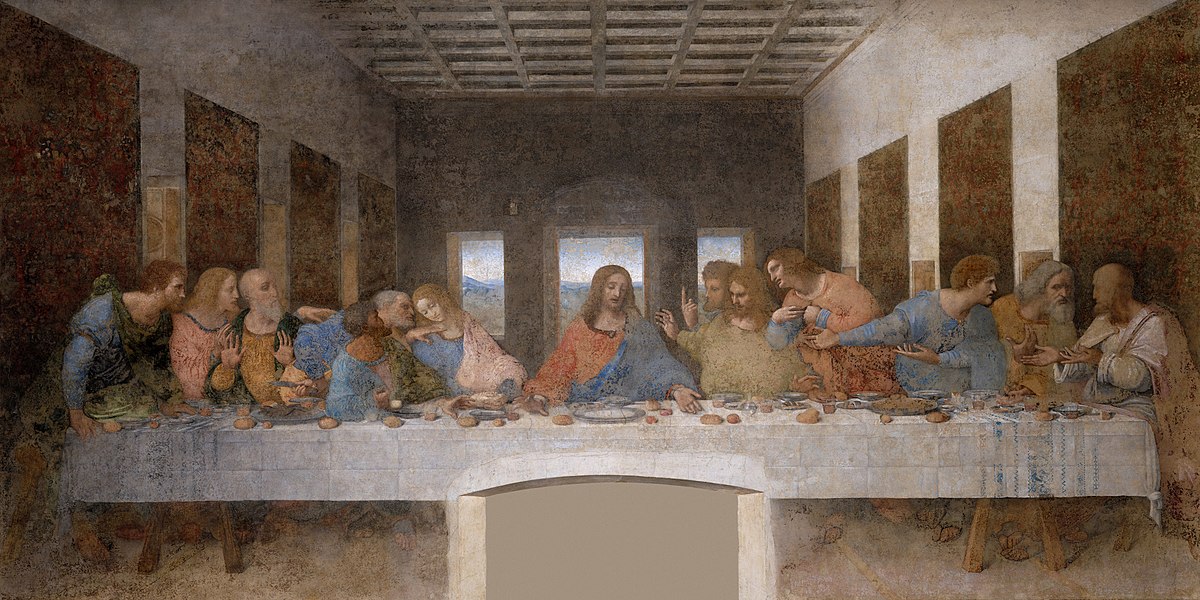The Last Supper by Leonardo da Vinci is one of the most iconic paintings ever created. There is no debating that. In this single work, da Vinci combined all of his masterful technique and skill. There is so much to unpack here so we are going to explain the genius of the classic fresco and whether it really depicts Mary Magdalene, as Dan Brown wrote in the Da Vinci Code.
Unprecedented psychologism
Examining The Last Supper, you see a plot straight out of the Gospel: the last meal of Christ and his closest disciples. This was the moment when Christ said: “One of you will betray me” before falling silent. This leaves the apostles with one question: who is the traitor?

Other artists chose this subject before, but Leonardo da Vinci depicted it in a new way. He focused not on the words of Christ, but the silence after them, heightening the drama. Thanks to this, the fresco is full of tension - da Vinci made each of the apostles react in his own way to Christ's powerful warning of betrayal.
Apostles
Apostle Simon: Reasonable. He gestures as if offering versions.
Apostle Thomas: Assumes that it is ordained in heaven.
Apostle Peter: Grabs the knife: he does not yet know who the traitor is, but is ready to defend his teacher.

Unusual Judas
In a surprise move, da Vinci showed the main villain front-and-center: Judas. Before The Last Supper, Judas was typically depicted alone on the opposite side of the table. That approach destroyed all the drama - the traitor was visible to both the viewer and the apostles.Leonardo planted Judas among the apostles, but kept him incognito. His face is the only one in the shadow and stands out against the background of Peter and John. Another key is a purse with pieces of silver, the reason Judas betrayed Christ. Additionally, the Gospel of Matthew says that Christ and Judas were the first to break bread. Here we see how they both reach for the plate.

Dan Brown was wrong
Pay close attention to Saint John, the figure to the left of Christ. Thanks to Dan Brown's book The Da Vinci Code, many believe that is not John the Evangelist, but Mary Magdalene. But this is not the case. Saint John is the youngest and most beloved disciple of Christ, therefore he was usually singled out among the rest of the apostles. For this painting and many others of the time, women often posed - hence the femininity of his features.
What makes light and optics unique
This painting has always been endlessly fascinating, even though it depicts an image seen before
many times. What makes The Last Supper so visually enticing? Essentially, Leonardo used optical tricks to toy with perspective and catch the eye.
Firstly, he portrayed the scene as if it were in the same space as you. It’s as if the light falls on the fresco from a real window on the wall. And the bedspreads are painted in such a way that they create the illusion that the room is a continuation of the refectory.

What makes the composition unique
Da Vinci singled out Christ in such a way that he filled a geometrically precise, central position on the fresco. This focuses attention on the calm, bright image of the Savior.
In addition, the artist distributed the 12 apostles symmetrically into groups of three. Their figures are united by a common motion as if along a chain, thanks to their gestures. All this, together with the verified geometry, creates the illusion of movement.
What makes technology unique
Leonardo was known for working slowly, but with paintings it was necessary to work quickly because usually they are created on fast-drying wet plaster. Additionally, frescoes are painted with tempera, which does not give complex shades and color transitions.
Because of all this, Leonardo decided to cheat a little bit. He mixed oil paint with tempera (oil dries longer and gives complex colors) and began to paint on a dry wall. This made it possible to work out the color, but it had a bad effect on the preservation of the fresco. The painting weakly adhered to the wall and began to crumble just 20 years after its creation.

What is left of Leonardo
During the last restoration in 1978-1998, the self-destruction of the fresco was stopped and it was fixed to the wall. Seasoned professionals removed many layers of unsuccessful restorations so that we can finally see the painting in all its glory. Unfortunately, little has survived from it. All these years later, less than 50% of the original paint surface remains.
